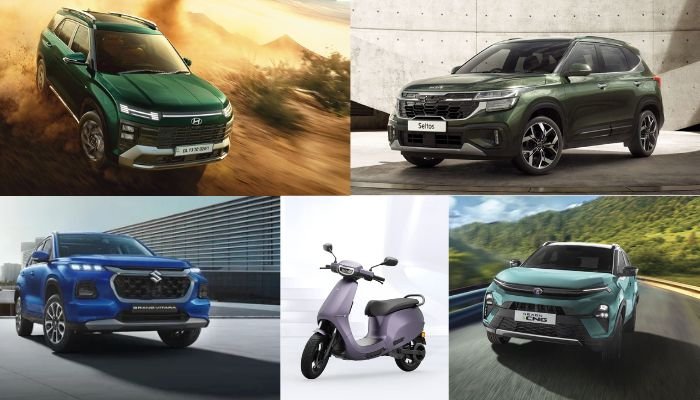Know all about the status of the Indian Automotive Industry. How it worked, especially in 2024 and what to expect from 2025!

It is truly a significant year in the Indian automotive industry. There have been events and changes during the year that triggered some pace in growth and avenues for future mobility in India. The country is one of the world’s largest automotive markets, and to this effect, the year saw exciting developments in terms of electric vehicles (EVs), moving towards sustainable automotive applications, and creating innovative technology, all amid swinging economic fortunes being felt worldwide.
Thus, let’s go through some of the key summaries and performances in the industry in 2024.
1. Slow but Steady Market Growth in Global Headwinds
Disruption in the supply chains across the globe caused by the phenomenal increase in material prices did affect the Indian automotive industry, but this continued to demonstrate strong growth.
- Passenger Vehicle: There was a 12% increase in sales of passenger vehicles from 2023 owing to the demand for SUVs and compacts.
- Two-Wheeler Segment: The two-wheeler market continued its dominance, as consumers, in rural and urban areas have found new preferences for affordable and fuel-efficient two-wheelers.
- Commercial Vehicles: The commercial vehicles segment registered a 9% growth because of infrastructure development and a booming logistics market.
2. Electric Vehicles (EVs): Order of the Day for 2024
EVs captured the general public’s and end-users’ attention this year, as the manufacturers tried to understand and adopt the change towards green mobility.
- Market Expansion: Nearly 2 million electric vehicles were sold, including electric two-wheelers, cars, and buses, reflecting a growth of almost 100%.
- Government Push: The initiatives have primarily aided in ramping up the adoption pace with incentives for EV manufacturing and implementation of the FAME II scheme.
- Top Players: Tata Motors literally dominated the EV car market with the Nexon EV Prime and Tigor EV, while Ola Electric and Ather Energy truly led the two-wheeler segment.
3. Increase in Technology and Innovation
Every automobile manufacturer was investing considerably in the next technology to offer for modernizing the definition of a car in 2024.
- Connected Cars: Cars employing state-of-the-art infotainment technologies and potent voice assistants were literally mainstream, inspiring the development of over-the-air updates as standard across locations.
- ADAS: Mid-segment vehicles began to be truly equipped with Advanced Driver Assistance Systems (ADAS), which include adaptive cruise control and lane-keeping assist.
- Sustainability in Manufacturing: Industry leaders literally adopted sustainable production techniques. Also, including the recycling of materials and reduced carbon footprints in manufacturing facilities.
4. Challenges of Industry
The year was largely positive, but there was always something to sour the cheer.
- Supply Chain Issues: Continuing semiconductor shortages spread delays in deliveries of vehicles into the first half of 2024.
- Cost Pressures: This increased cost of inputs from rising prices led to some increment in prices, thus hitting affordability, particularly in the budget car segment badly impaired.
- Consumer Sentiment: Interest rates are so high on loans that sectors, especially in the rural area, become deflated about buying automobiles.
5. Government and Policy Interventions
A significant player in determining the fate of the industry was the Indian government in 2024.
- Pushing EV Infrastructure: More than 10,000 new charging stations were installed in the country, which alleviated consumer concerns over range anxiety.
- PLI Scheme Impact: The PLI scheme continued to bring international Original Equipment Manufacturers (OEMs) around the globe to invest in local production in India.
- Scrappage policy: The scrappage policy has taken good momentum to coax people into giving out their old, polluting rides for newer, more efficient cars.
6. Sustainability and the Road Ahead
Sustainability transformed so much of the consumer mindset and consequently the mindset of companies.
- Hybrid Vehicles: As a connecting link between the internal combustion engine (ICE) and the electric vehicles (EV), hybrids become popular mainly from brands like Toyota and Maruti Suzuki.
- Green Energy Utilization: Also, automakers are turning more towards renewable energy sources for manufacture with high target setups for carbon neutrality by the end of the decade.
Top Performers of 2024

Here are the top contributors to the industry this year:
- Maruti Suzuki: It was still possible to be referred to as the best-selling car brand for the previous year’s sales thanks to the huge range of inexpensive options.
- Tata Motors: Became a leader in terms of innovation for EVs and evidence of a strong developmental base.
- Hyundai and Kia: Built on the existing growth by offering feature-rich SUVs and compact vehicles.
- Ola Electric: Additionally, disrupted the two-wheeler electric vehicle market by building high-performance and cheap models.
While transpiring before the entire Indian automotive industry, 2024 will herald the most exciting future ahead. EV acceptance peaks and technology promise runs high, with support from government public policy for an even more action-filled 2025.
Indeed, many of these challenges relate to topics such as affordability and infrastructure expansion in the future. The horizon, however, for a brighter tomorrow in mobility will be left wide open, with the very changed auto industry of the Indian sub-continent.
A car enthusiast or a sporadic buyer, India gave 2024 a different dimension – that the Indian automotive industry is, indeed, on an express pace to join the first ranks of world fame.
Which were your favourite automotive moments in 2024? Share with us in the comment box below!
Also Read: Right-Hand Drive Next-Gen Renault Duster Revealed; India Launch Set for 2025